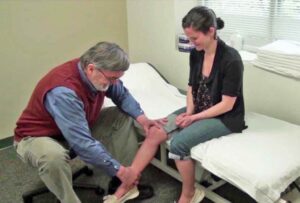Intro
Yes! PT offers a unique evidence-based approach to evaluation and treatment that has proven to be safe and effective. Evidence-Based, Patient-Centered Care means that we incorporate the latest valid evidence in our evaluation and treatment.
We see you as a whole person, not just a knee, neck, back or shoulder.
We will take the time to listen to you and understand your problem.
We will design a wellness-oriented physical therapy program tailored to your specific strengths, and help identify goals for improvement.
Our Ideas
1. The body’s structure, posture and movements depend on the coordinated activity of muscles, including global, local, striated, smooth and cardiac muscles. This is true whether you are moving, standing, sitting or lying down.
2. Muscle activity is regulated by the central nervous system (CNS), relying on input from the motor cortex, and sensory input from the spinal cord and peripheral receptors.
3. If muscles are over or under-active, changes will be observed in posture and movement, possibly resulting in pain or impaired function.
4. We can improve posture and movement, and therefore pain and function, by using biomechanical interventions to alter the CNS’ regulation of muscle activity.
What is Biomechanics ?
Technically speaking, biomechanics is the mechanical analysis of biologic systems.
Using different tools, like MRI, CT, EMG, and motion analysis (see below), we can study the effects of forces applied to the wrist, spine, or other body parts, during activities like steering a car, throwing a ball, etc.
As physical therapists, we apply biomechanical knowledge to protect, correct and optimize the function of ligaments, fascia, muscles and joints. By analyzing the function of body structures, we can devise a strategy to minimize injury, and speed healing when injury occurs.


